Cult brand Yeti was in no rush to make its debut in the eMTB segment. However, good things take time and the American brand knocked it out of the park with their first ever motorised bike, so we decided to pit the best eMTB of the year against the hottest analogue enduro bruisers of the season. How did it fare against its lighter competitors?
For an overview of the test fleet head to the group test: The best enduro bike of 2023 – 14 models in review
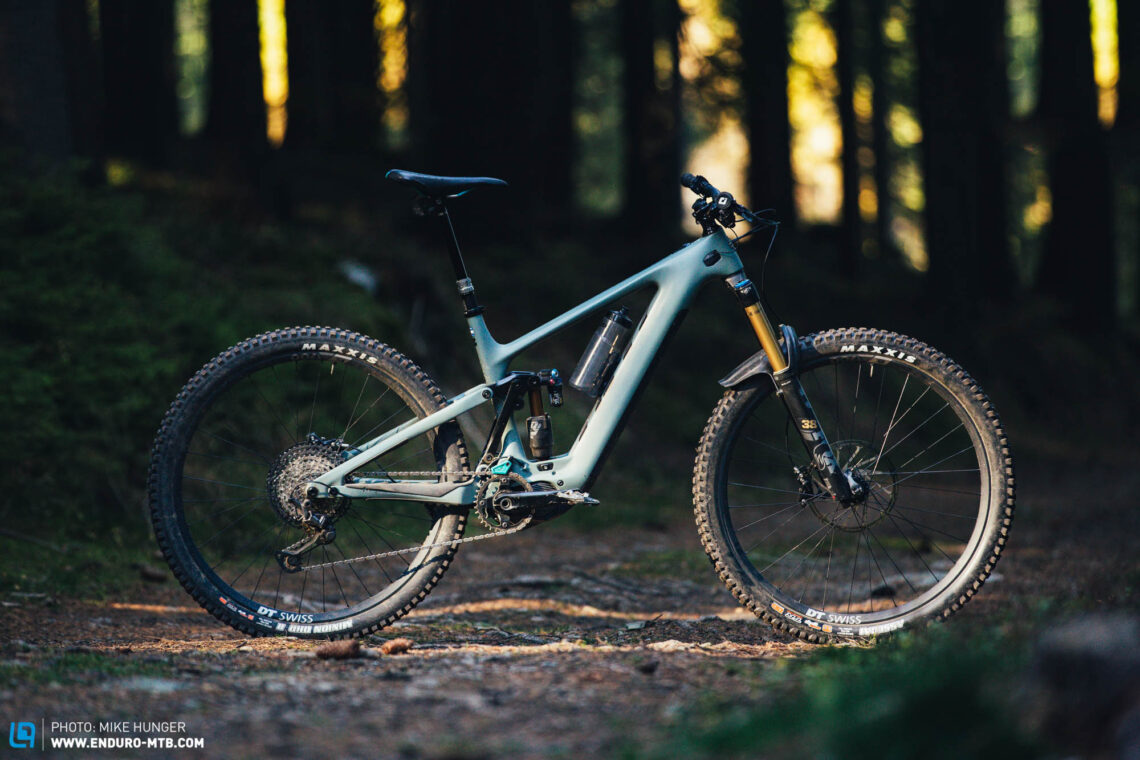
23.5 kg in size L | € 13,790 | Manufacturer’s website
The Yeti 160E T1 has already impressed our test team in the big 2022 eMTB group test of our sister magazine E-MOUNTAINBIKE, delivering an impressive overall performance. Not only is it the only assisted offering in Yeti’s product range, but also one of only two eMTBs in our 2023 enduro group test, so it comes as no surprise that, at 23.5 kg, it’s the heaviest bike in the entire test field. At € 13,790, it’s also the most expensive one. Unlike Yeti’s analogue bikes, the 160E features a Sixfinity rear suspension system, which was developed specifically for this bike to accommodate the motor. As the name suggests, the Yeti 160E generates 160 mm travel at the rear, complemented by a 170 fork. We pitted the electric snow giant against 13 of the hottest enduro bikes of the season to find out the pros and cons of electric enduro bikes. Spoiler alert: it also has its perks downhill!
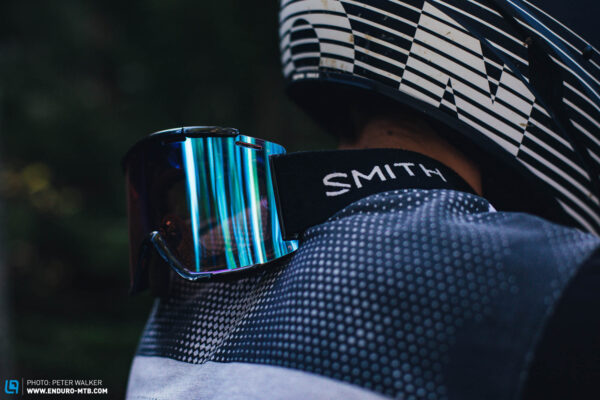

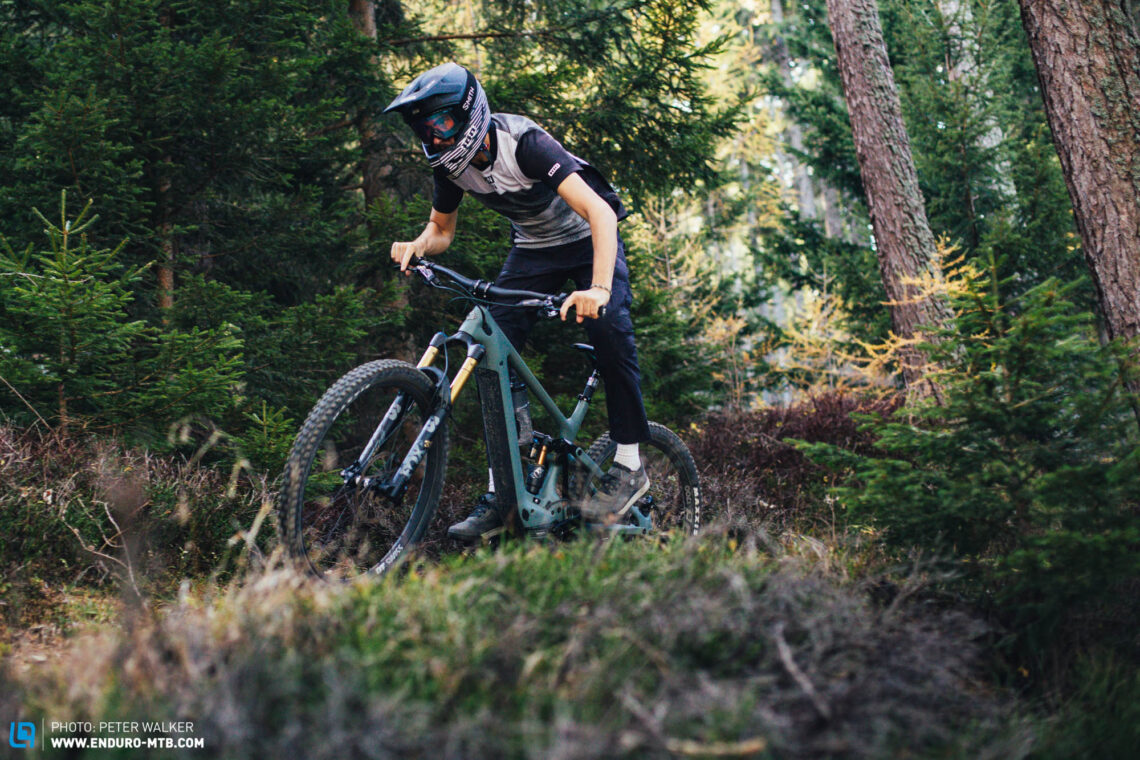
The Yeti 160E T1 2022 in detail
The Yeti 160E T1 comes equipped with a Shimano EP8 motor, which draws its power from a 630 Wh battery and is renowned, amongst other things, for its distinctive clunking noise – and the Yeti is no exception! The frame has a high-quality look and is beautifully finished, with the elegant ice-axe head badge providing the proverbial icing on the cake. All cables are neatly clamped at the ports, ensuring a quiet ride on the trail. A generously sized chainstay protector prevents chain slap and paint chips while a big TPU plate on the downtube shields the frame from stray rocks and nasty impacts. The Yeti 160E doesn’t feature a tool mount, so you’ll have to carry your trail essentials in a backpack or hip pack.
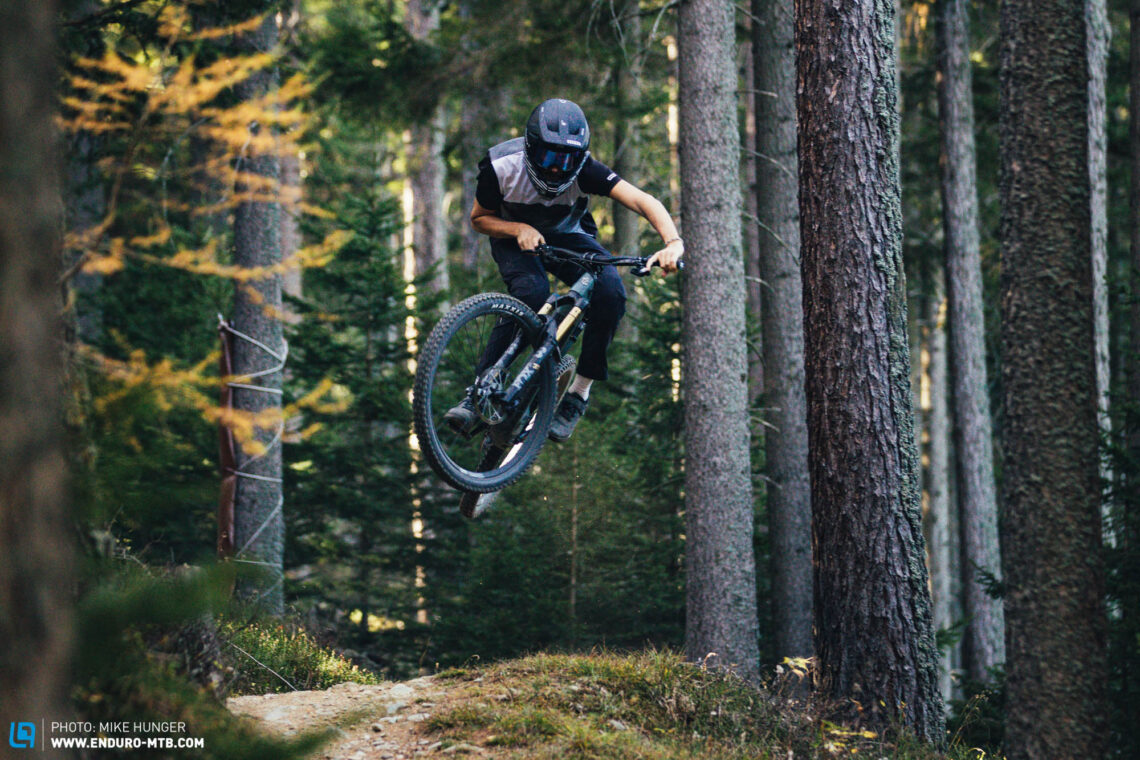
The suspension of the 160E strikes an excellent balance between composure, support and reserves.
The spec of the Yeti 160E T1 2022
The suspension of the Yeti 160E T1 consists of a FOX 38 Factory GRIP2 fork and matching FOX X2 Factory air shock. Both feature externally adjustable low/high speed compression and rebound settings, allowing you to fine tune the suspension to suit your needs and riding style. The wireless RockShox Reverb AXS dropper post only has 170 mm of travel – the shortest on test – and a rather long stack height, restricting freedom of movement on the bike. SRAM CODE RSC do stopping duties and are paired with a massive 220 mm rotor at the front and 200 mm at the rear. Shifting is taken care of by a 12-speed Shimano XT drivetrain. To ensure a tidier cockpit, Yeti route the data cables through the 800 mm carbon handlebars, which were developed in house specifically for this bike. The chain guide is neatly integrated into the frame and prevents the chain from falling off the chainring. Like several bikes in this group test, the 160E rolls on a DT Swiss EX 1700 alloy wheelset, which we’ve already praised on different occasions in the past. MAXXIS supply the tires, combining a 29×2.5” MAXXIS ASSEGAI with soft MaxxGrip rubber compound at the front and 29×2.4” Minion DHR II with harder MaxxTerra compound at the rear, both in the robust DoubleDown casing – a great tire combo! However, the front tire of the production bike features the harder MaxxTerra rubber compound and thin EXO+ casing, which we recommend upgrading to a more robust model with a tougher, puncture resistant casing that allows you to run lower pressures for more traction.

The chain guide is neatly integrated into the frame and doubles as a cable guide. That being said, we have a different idea of colour matching!
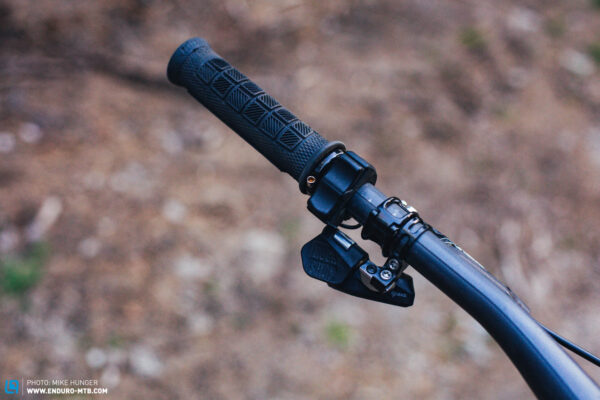
The data cables of the motor are routed through the handlebars, ensuring a tidier cockpit.
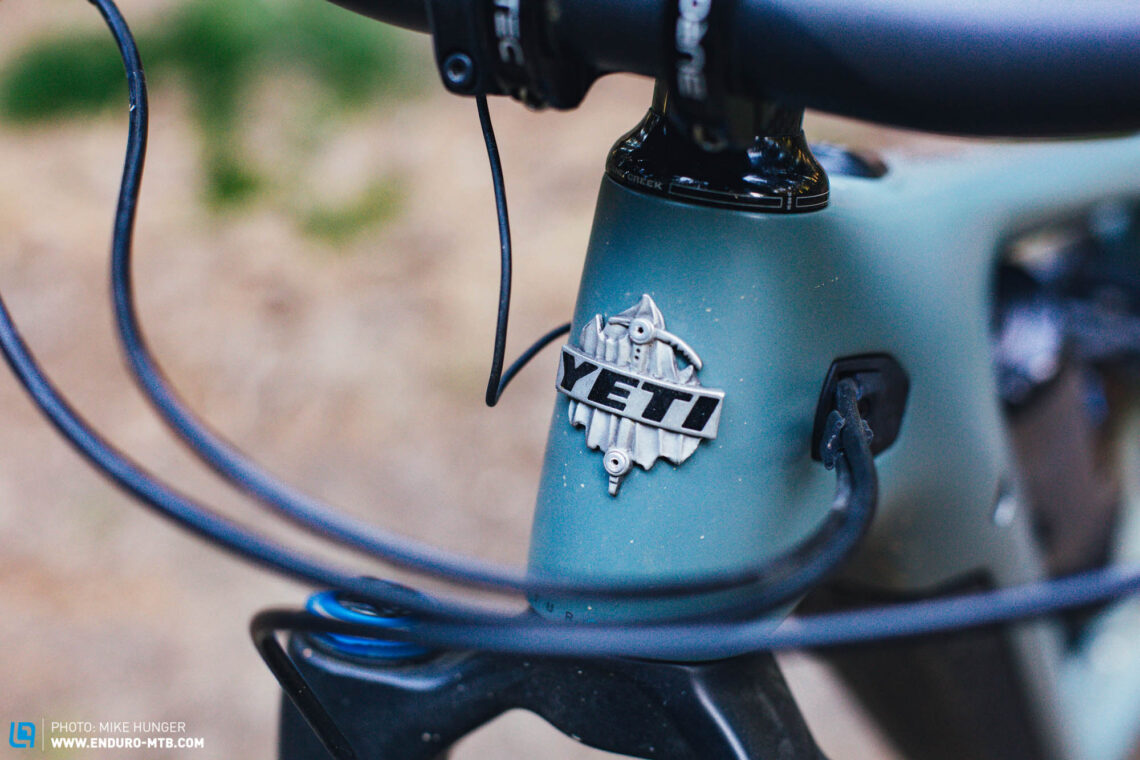
The flip chip in the lower shock mount allows you to alter the geometry of the Yeti 160E.
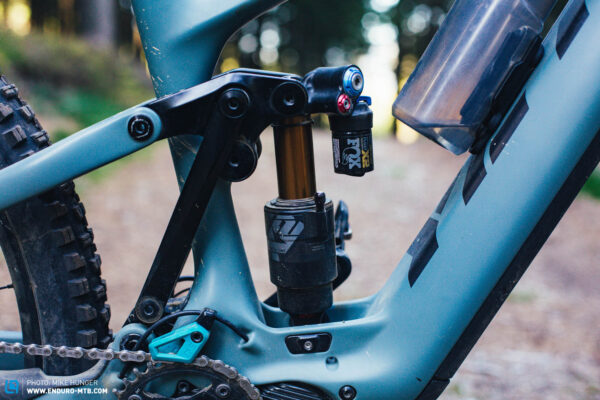
Mit einem Flip-Chip lässt sich die Progression des Hinterbaus in wenigen Momenten ändern.
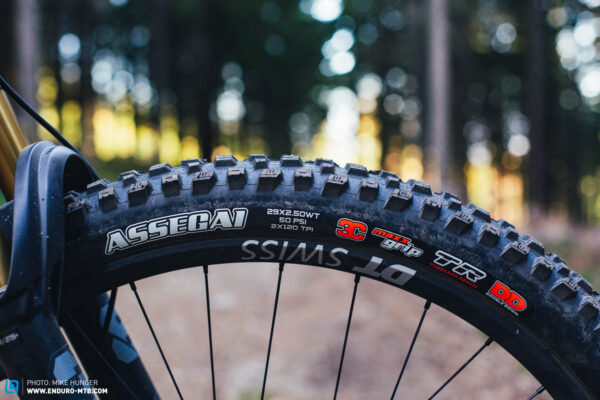
The front tire of the Yeti comes standard in the harder MaxxTerra rubber compound and thin EXO+ casing. However, our test bike features a more robust casing and softer compound, which suits the character and intended use of the bike far better.
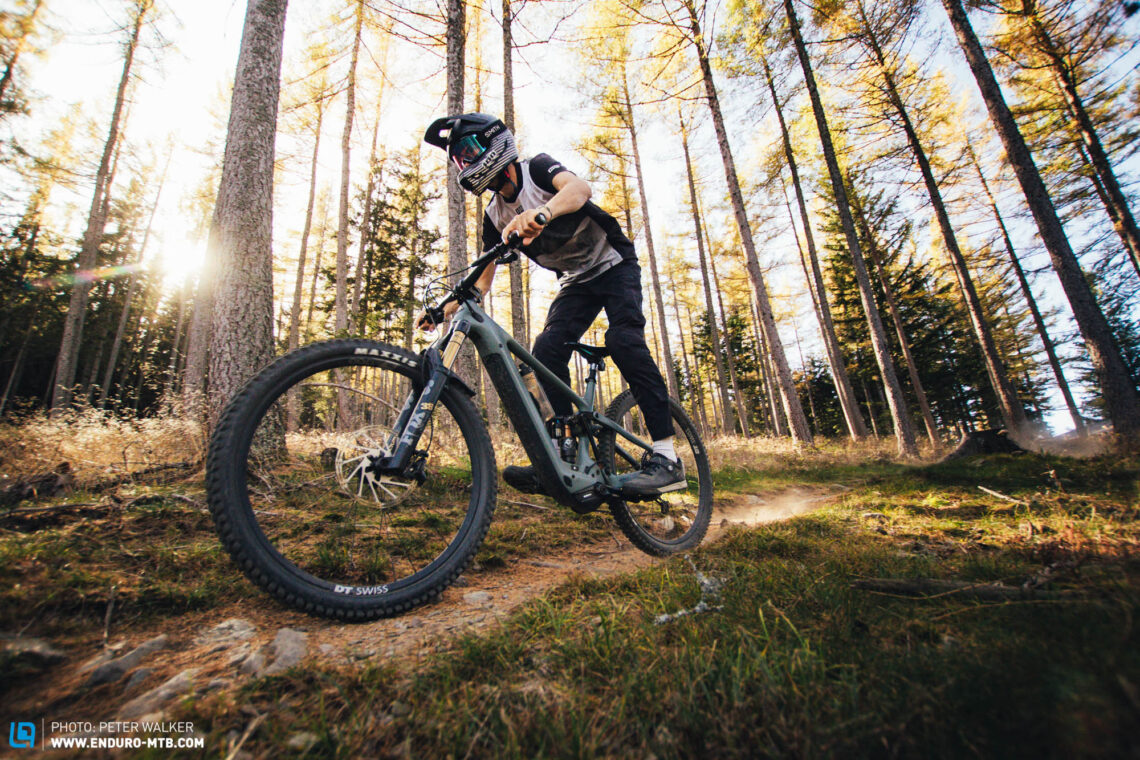
Yeti 160E T1
€ 13,790
Specifications
Motor Shimano EP8 85 Nm
Battery Shimano BT-E8036 630 Wh
Display Shimano STEPS SC-EM800
Fork FOX 38 Factory GRIP2 170 mm
Rear Shock FOX X2 Factory 160 mm
Seatpost RockShox Reverb AXS 170 mm
Brakes SRAM CODE RSC 220/200 mm
Drivetrain Shimano XT 1x12
Stem Burgtec Enduro MK3 50 mm
Handlebar Yeti Carbon 800 mm
Wheelset DT Swiss EX 1700 29"
Tires MAXXIS ASSEGAI, Doubledown, 3C MaxxGrip/MAXXIS Minion DHR II, Doubledown, 3C MaxxTerra 2.5/2.4
Technical Data
Size S M L XL
Weight 23.5 kg
The geometry of the Yeti 160E T
The Yeti 160E T1 is available in four sizes, S to XL. Our test bike in size L combines 480 mm reach and a 450 mm seat tube, which is the longest in the entire test field. Together with the tall stack height and conservative travel of the dropper post, this restricts freedom of movement on the bike. However, the seat tube has a generous insertion depth, allowing you to push even long-travel dropper posts all the way into the frame. Unlike its analogue counterpart, the 160E has 446 mm chainstays across all frame sizes. A flip chip on the lower shock mount, allows you to adjust the progression of the rear suspension in three stages (25%, 30% and 35%).
| Size | S | M | L | XL |
|---|---|---|---|---|
| Seat tube | 380 mm | 410 mm | 450 mm | 495 mm |
| Top tube | 561 mm | 592 mm | 613 mm | 642 mm |
| Head tube | 105 mm | 110 mm | 122 mm | 133 mm |
| Head angle | 64.5° | 64.5° | 64.5° | 64.5° |
| Seat angle | 78.0° | 78.0° | 78.0° | 78.0° |
| Chainstay | 446 mm | 446 mm | 446 mm | 446 mm |
| BB Height | 350 mm | 350 mm | 350 mm | 350 mm |
| Wheelbase | 1,209 mm | 1,240 mm | 1,262 mm | 1,292 mm |
| Reach | 430 mm | 460 mm | 480 mm | 505 mm |
| Stack | 617 mm | 620 mm | 625 mm | 635 mm |

The Yeti 160E T1 on the trail
Uphill, the Yeti 160E runs outside the competition, grinding its way up all sorts of climbs with its powerful 85 Nm motor – provided there’s enough juice in the battery. The pedalling position is central, and the weight is evenly distributed between the front and rear, ensuring tons of traction on both ends, even on loose terrain. Steep, technical climbs that would be impossible to conquer without a motor, are a piece of cake onboard the 160E. Even on moderate climbs, the pedalling position is comfortable and doesn’t put too much pressure on your hands.
The 160E is the undisputed climbing king in our 2023 enduro group test, providing you with your own personal shuttle service with its 85 Nm motor.
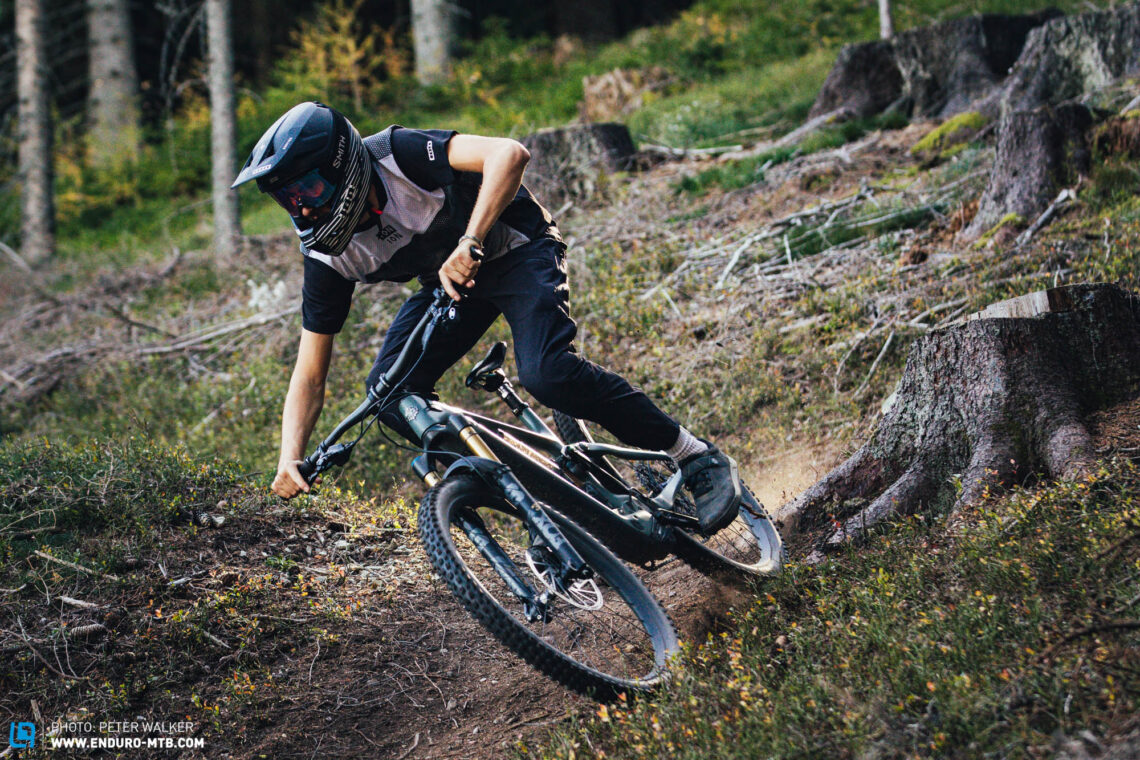
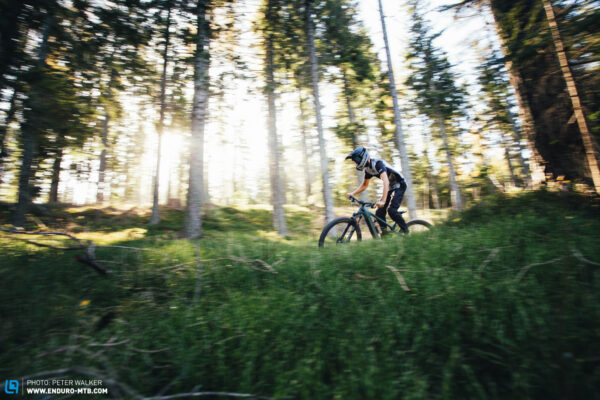
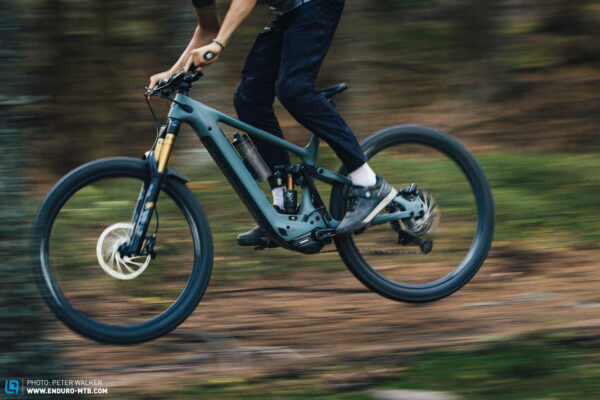
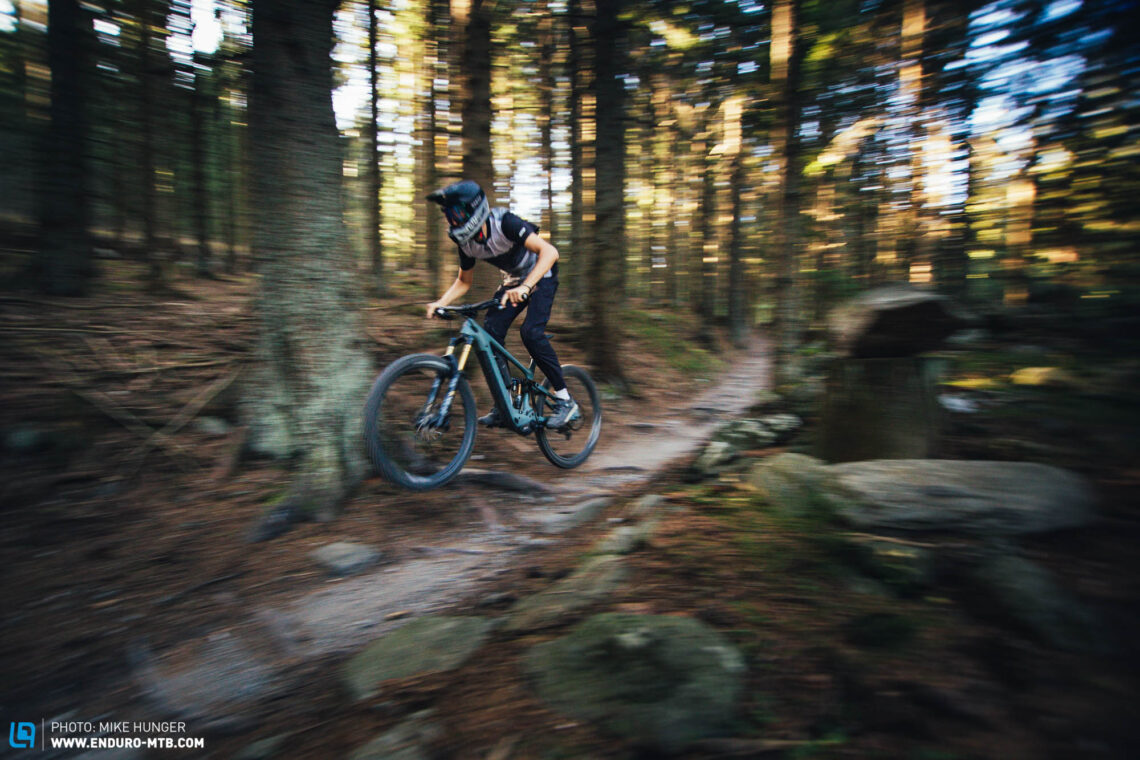
The higher mass of Yeti’s eMTB makes it feel a little sluggish, which becomes particularly evident under braking and with fast direction changes.
Downhill, the 160E is incredibly composed and ploughs through the nasties chunk with its excellent suspension and high system weight.
Downhill, the 160E has intuitive and predictable handling, which, unfortunately, comes at the expense of agility. With its heavy system weight and plush suspension, the 160E sticks to the ground like Velcro, ensuring excellent composure and allowing you to negotiate rowdy high-speed sections and ambitious highlines without batting an eyelid. However, with spontaneous direction changes and jumps, you have to work a lot harder. The heavier mass also becomes evident when slamming on the brakes and negotiating steeper trail sections, where the Yeti pulls you down the hill, forcing you to keep your fingers on the brakes to compensate for the inertia. The suspension is plush but still provides good support in nasty compressions. The 160E really likes big jumplines, where it provides enough stability to fly through the air with confidence while conveying huge amounts of confidence in the process. Playful riders however, have to work noticeably harder to get the Yeti sideways. Compared to the other eMTB in this test, the SIMPLON Rapcon Pmax TQ 170/165, the 160E is a fair bit heavier, feeling noticeably less nimble on the trail and delivering a less natural ride feeling but at the same time convincing with more sensitive suspension and better composure.
Tuning tips: Play around with the rear suspension’s progression settings | Swap the stock front tire for one with more robust casing and softer rubber compound

Conclusion
As the only electric mountain bike in this test, the 160E T1 is the clear outsider in our group test and as such remains unchallenged on the climbs. However, Yeti’s eMTB also knows how to impress when gravity takes over, generating tons of traction while at the same time ensuring excellent stability in corners and high-speed sections thanks to its heavier system weight and strong suspension. Unfortunately, this all comes at the expense of agility and as a result the 160E can’t keep up with the best all-rounders in this group test.
Tops
- It’s an eMTB!
- Combines traction and composure
- Intuitive handling
Flops
- It’s an eMTB! ;)
- Annoying EP8 clunking noise
- Short-travel dropper post and long seat tube restrict freedom of movement
You can find out more about at yeticycles.com

The test field
For an overview of the test fleet head to the group test: The best enduro bike of 2023 – 14 models in review
All bikes in test: Canyon Strive CFR 8 (Click for review) | Deviate Claymore (Click for review) | Hope HB916 (Click for review) | Intense Tracer 279 S (Click for review) | MERIDA ONE-SIXTY 8000 (Click for review) | Mondraker Carbon Foxy RR (Click for review) | Norco Range C1 (Click for review) | Santa Cruz Megatower X01 AXS RSV (Click for review) | Santa Cruz Nomad X01 AXS RSV (Click for review) | SIMPLON Rapcon 170/165 (Click for review) | SIMPLON Rapcon Pmax TQ 170/165 (Click for review) | Specialized Stumpjumper EVO Elite Alloy (Click for review) | Yeti 160E T1 | Yeti SB160 T3 (Click for review)
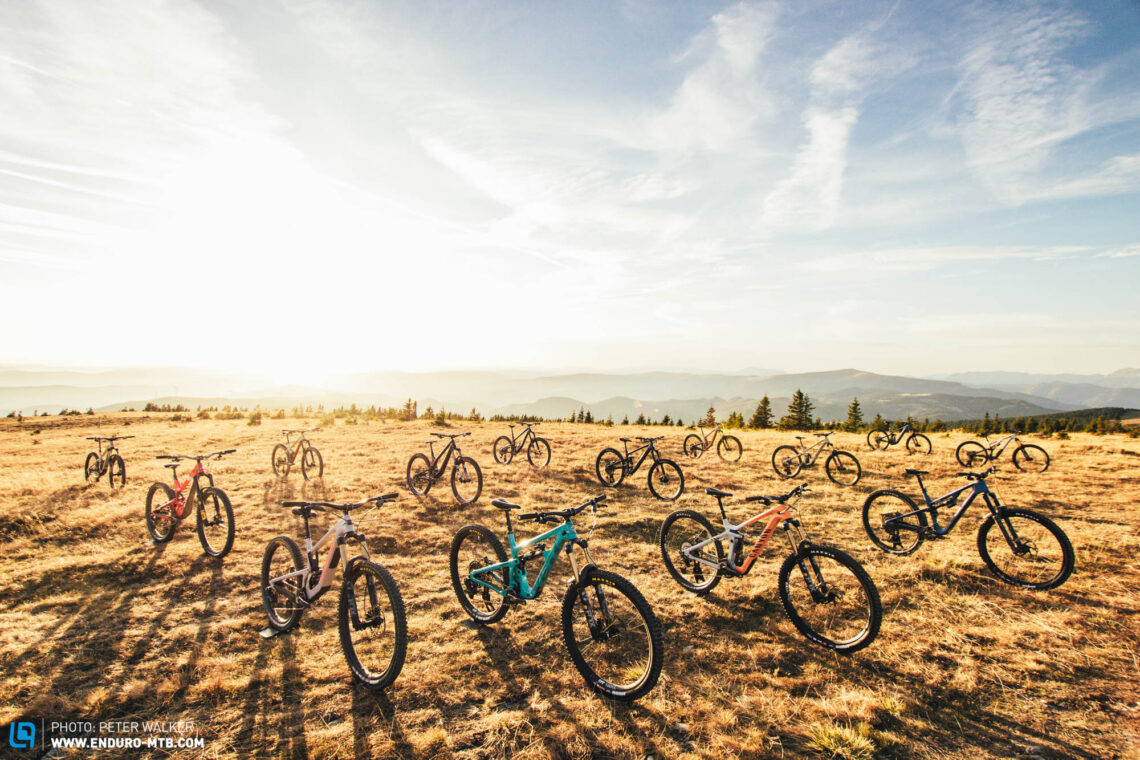
Did you enjoy this article? If so, we would be stoked if you decide to support us with a monthly contribution. By becoming a supporter of ENDURO, you will help secure a sustainable future for high-quality mountain bike journalism. Click here to learn more.
Words & Photos: Lars Arendt









